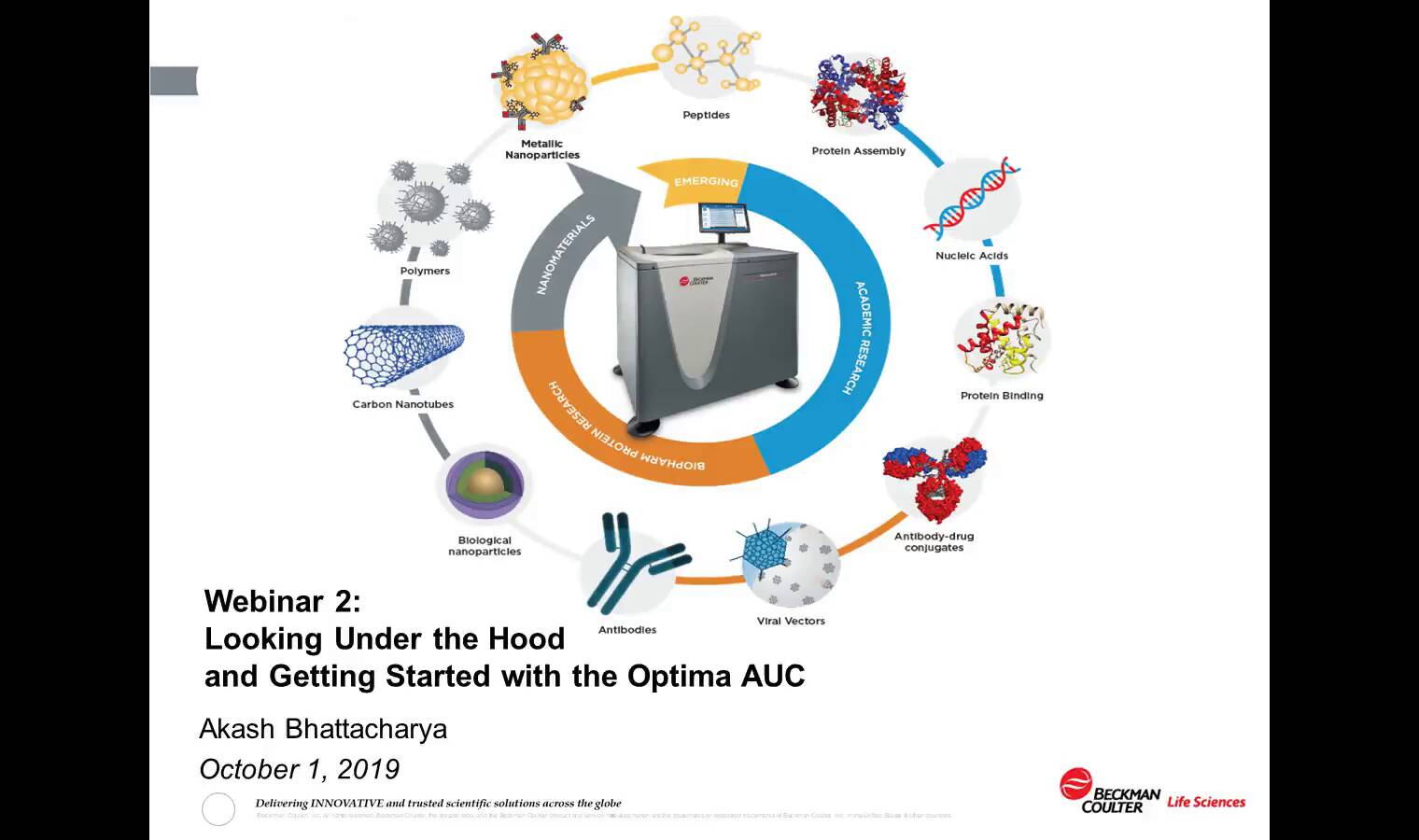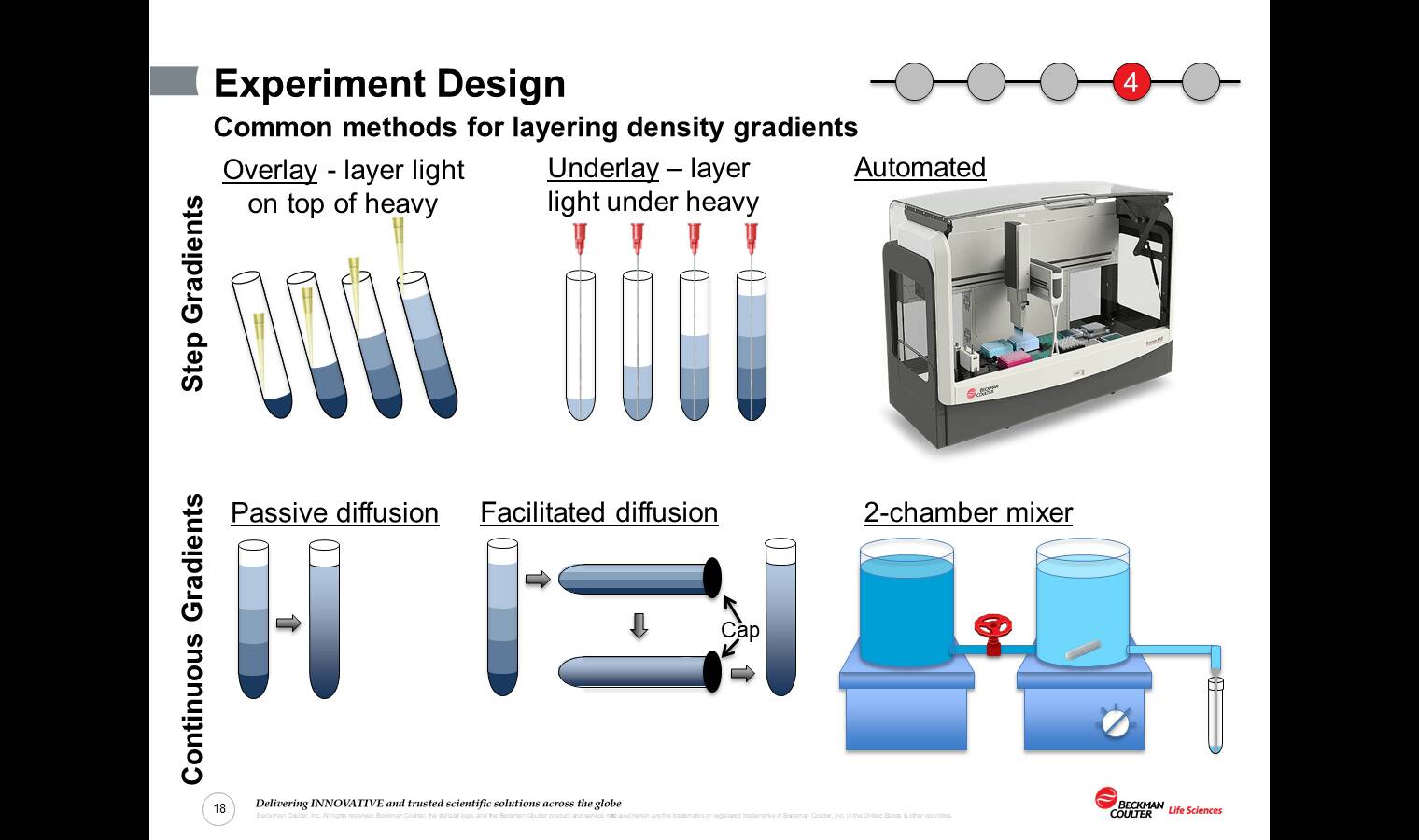Characterizing Viral Vector Fullness in Density Gradient Separations
Density gradient ultracentrifugation (DGUC) has long been a staple technology providing high resolution purification of numerous materials used in vaccines, gene therapy, and other advanced therapeutics. While traditionally used for purification, this approach has recently been adapted for analytical purposes supporting advanced therapies by using an analytical ultracentrifuge (AUC), such as the Optima AUC.
Density gradient equilibrium AUC (DGE-AUC) is a highly simplified analytical method that provides the same high-resolution benefits as its prep-scale counterpart, along with numerous advantages over the current gold standard sedimentation velocity AUC (SV-AUC) method. DGE-AUC with CsCl gradients is amenable to AAV, adenovirus, and other large viral particles, providing high resolution data with significantly less sample (>30X sensitivity) than SV-AUC and readily enables the use of multi-wavelength analysis without compromising data quality. Furthermore, DGE-AUC is serotype-agnostic with intuitive interpretation and analysis (not requiring specialized AUC software), poised to benefit a wide array of gene therapy & viral vector users where traditional analytical methods fall short.
Watch this webinar to learn about:
- Adapting gold standard CsCl isopycnic density gradient purification methods to AUC
- Advantages of DGE-AUC over “classical” methods:
- Highly simplified interpretation and analysis – a walkthrough with Excel
- Higher resolution with significantly less sample
- Applications of DGE-AUC in gene therapy and beyond: AAV, adenovirus, plasmids




